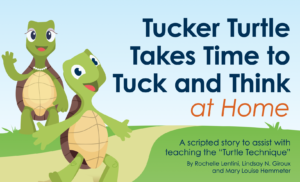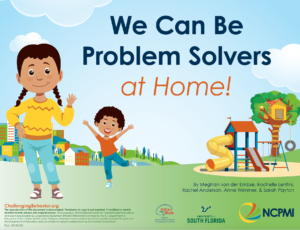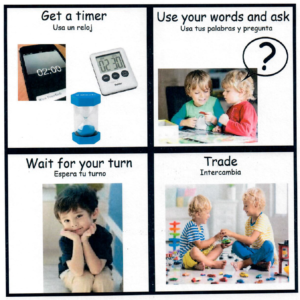Getting your young child to “STOP, and THINK” before they act impulsively can feel like an impossible task! You may find yourself constantly catching them in the middle of different behaviors that you KNOW THEY KNOW BETTER THAN TO DO. And although they do show remorse after or are able to tell you after what they should have done instead, you may wonder…WHY DO THEY STILL CONTINUE TO DO IT?!
The answer is their brains are still developing and they are still learning SELF-REGULATION skills including how to control impulsive or “knee-jerk reactions” or behaviors. This entails your child noticing and catching ideas and thoughts that come into their mind BEFORE it turns into an action, and then regulating their emotions so they are able to pause and then problem solve a better solution. This is a VERY complicated process and takes a lot of time to develop and a lot of practice to perfect!
As frustrating as these impulsive behaviors are for us as parents, we have to remember that IMPULSE CONTROL, SELF-REGULATION and PROBLEM SOLVING are all higher-level thinking skills based in the Frontal Lobe of the brain. This part of the brain controls our EXECUTIVE FUNCTIONING skills which includes things like planning ahead, self-monitoring, perspective taking and attention to task. This is the LAST part of the brain to fully develop and sometimes doesn’t finish developing until young adulthood!
So, the fact that your Preschool to Kindergarten aged child hasn’t mastered these things yet, is totally normal and expected. I mean even us “fully developed” adults have trouble with impulse control at times! How many of us have reached for a salty or sweet treat instead of a healthy carrot, even though we “KNOW BETTER”. Or how many times have we let a little curse word slip out when we are upset or drop something even though we “KNOW BETTER”. When things are tempting enough or when we are not in control of our emotions, impulse control is SUPER HARD!
Bottom line Impulse Control takes a LONG time to fully develop and is a difficult skill to truly master for anyone!
But that being said, there are lots of things you as a parent can do NOW to help grow and foster the development of this part of the brain. Here are a few ideas to try with your child at home that will help with IMPULSE CONTROL, EMOTIONAL REGULATION and PROBLEM SOLVING:
- Play Impulse Control Games- Games like “Red Light-Green Light”, “Simon Says” or “Follow the Leader” are super fun ways to teach your child to listen carefully and think before acting. Playing these games daily, even if for only 10 minutes a day can give your child an opportunity to practice active listening and impulse and body control in a highly engaging way.
- Introduce “Tucker Turtle” and the “Turtle Tuck”-Using this Scripted Story can teach children the steps involved in self-regulation and problem solving in a fun way. You can read the story below and then act-out scenarios together where you and your child practice doing the “Turtle Tuck” to STOP before reacting and “tuck like a turtle” into your shells to regulate emotions and problem solve a better solution before acting.
- Teach and practice using “We Can Be Problem Solvers at Home” and the “Solutions Kit”– This story helps walk children through the steps of emotional regulation as well as the steps of problem solving. It has great visuals at the end that can be printed and posted in your home for you and your child to reference when they need to solve a problem. Another tip is having a Solutions Kit printed out and handy for your child to use when they are trying to come up with a solution to their problem that is safe and fair.
- Model Your Own Impulse Control- We all know kids don’t do as we SAY, they do as we DO! So, if we want THEM to control their impulses, self-regulate and problem solve…we need to MODEL FOR THEM how it is done! This would look like you narrating out loud for your child every step in your problem solving process including: you catching and labeling your emotions when something happens, and then stopping and using your “calm down tools” to make sure you can think and problem solve a better solution. For example: “Ugh mommy is feeling frustrated because I burned the chicken for dinner! But before I yell, I’m going to STOP, and take deep breaths so I can come up with a better solution. (takes deep breaths in front of child), now that I feel calm, I can pick a solution, maybe I can make pizza instead or we can heat up some soup.” Although this “self talk” may feel awkward at first for you, it is a proven way to help teach your children how to develop “internal dialogue” that will help them manage impulses and show them how they can problem solve just like you!



